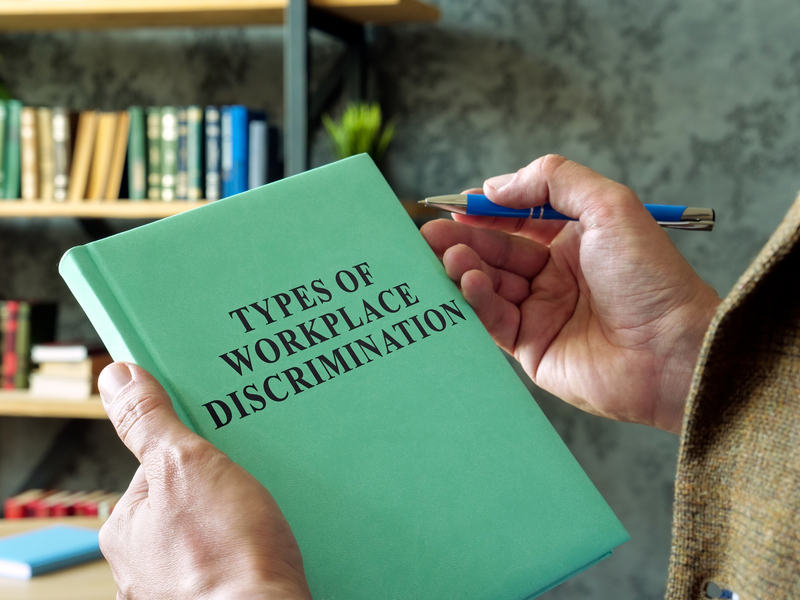
Examples of Workplace Bias: Creating Inclusive Work Environments
In the pursuit of a modern and inclusive workplace, recognizing and combating bias is a critical step forward. Workplace bias, whether it's conscious or not, can lead to serious repercussions for both the individual and the organization at large. As a leader or HR professional, addressing these biases is not only ethically imperative but also pivotal in fostering an environment that encourages diversity and maximizes the potential of every employee.
This isn't just about policy adherence – it's about cultural transformation. The examples of workplace bias shared here are designed to be relatable and provide practical insights into the types of biases that may be present in your workplace, and how to tackle them head-on.
Examples Of Workplace Bias
Unconscious Bias
Consciously, we all endeavor to be fair and objective, yet our subconscious mind can be a minefield of biases that seep into our decision-making processes without us even realizing. This 'unconscious' form of bias can create barriers to equality and diversity in the workplace.
Unconscious bias, also known as implicit bias, refers to the attitudes or stereotypes that affect our understanding, actions, and decisions without us knowing it. Examples of bias include affinity bias, where individuals unconsciously favor others who share similar attributes, and confirmation bias, which leads to preferential treatment of information that confirms existing beliefs.
How Unconscious Bias Affects Hiring, Promotions, and Decision-Making
During recruitment, unconscious bias might lead to hiring managers selecting and favoring candidates who they feel are most like themselves, thus creating a homogenous team. In the context of promotions, managers may subconsciously view individuals who mirror the existing leadership team as more 'fit' for advancement, despite the qualifications of others.
Example of Gender bias and the impact on career advancement and opportunities
Common gender stereotypes include the belief that women are more nurturing and that men are more assertive and ambitious, leading to leadership roles being predominantly filled by men.
Gender bias manifests itself in various ways, such as in the form of the 'maternal wall,' which characterizes working mothers as less committed to their jobs, or with phrases like 'bossy' that are disproportionately used to describe assertive women.
For women, gender bias often means being left out from networking opportunities, being passed over for promotions, and receiving lower salary offers compared to their male counterparts.
Example of racial bias in hiring, promotions, and treatment
Racial bias can hold back minority groups, damaging morale, and thwarting diversity efforts.
Negative stereotypes can lead to assumptions about the work ethic, intelligence, and integrity of individuals based on their race, contributing to racial bias in the workplace.
Racial bias is evident in the lack of diversity in leadership roles, the disproportionality of disciplinary actions against ethnic minorities, and even the 'whitewashing' of marketing and outreach efforts.
Organisations that fail to address racial bias, risk alienating and losing talented employees from underrepresented racial groups, ultimately undermining their diversity and inclusion initiatives.
Examples of age bias in recruitment and retention
Discrimination based on age, often referred to as ageism, can adversely impact both younger and older employees.
Common stereotypes about age include the belief that older workers are less technologically savvy and adaptable, while younger employees may be seen as inexperienced.
Age bias can be seen in job postings that contain language biased toward a certain age group and in the retention of older employees, who may be sidelined or given fewer opportunities for advancement.
Age bias can disrupt the benefits of intergenerational collaboration, which include a mix of perspectives, skills, and strengths that can be harnessed for innovation and problem-solving.
Examples of bias Against disabilities
The workplace may inadvertently create barriers for individuals with disabilities, making it difficult for them to fully engage and contribute. Preconceived notions about the capabilities and limitations of individuals with disabilities can lead to the underestimation of their potential and contributions.
Inaccessible workplaces, both physically and in terms of technology, can be examples of institutional bias that prevent individuals with disabilities from entering, participating, and advancing within the workforce.
Creating an inclusive environment involves not just legal compliance but a proactive effort to make the workplace more accessible, comfortable, and welcoming for employees with disabilities.
Addressing Workplace Bias
Combatting bias is not a task that one department can tackle solo, it requires a company-wide approach that includes policies, training, and a culture that values diversity and inclusion.
Organizations must develop and implement strategies to recognize and eliminate bias, such as diverse hiring panels, structured interview processes, and implementing 'bias interrupters' for decision-making.
Providing all employees with training on recognizing and addressing their biases, as well as courses that promote inclusivity, respect, and understanding, can significantly impact the workplace culture and practices.
Conclusion: Striving for an Inclusive Future
The struggle against workplace bias is ongoing. By examining the examples outlined, we can develop a deep understanding of the subtle (and not so subtle) forms of bias that may be present, and take action to foster a more equitable and inclusive workplace. Such an environment not only benefits individual employees but also enhances organizational performance and innovation.
As leaders and HR professionals, the commitment to reducing bias and promoting diversity is a commitment to the future. It's a future where everyone in the workplace can achieve their full potential, irrespective of their background or identity. It's a future that we not only imagine but one that we can bring to life through our everyday actions.